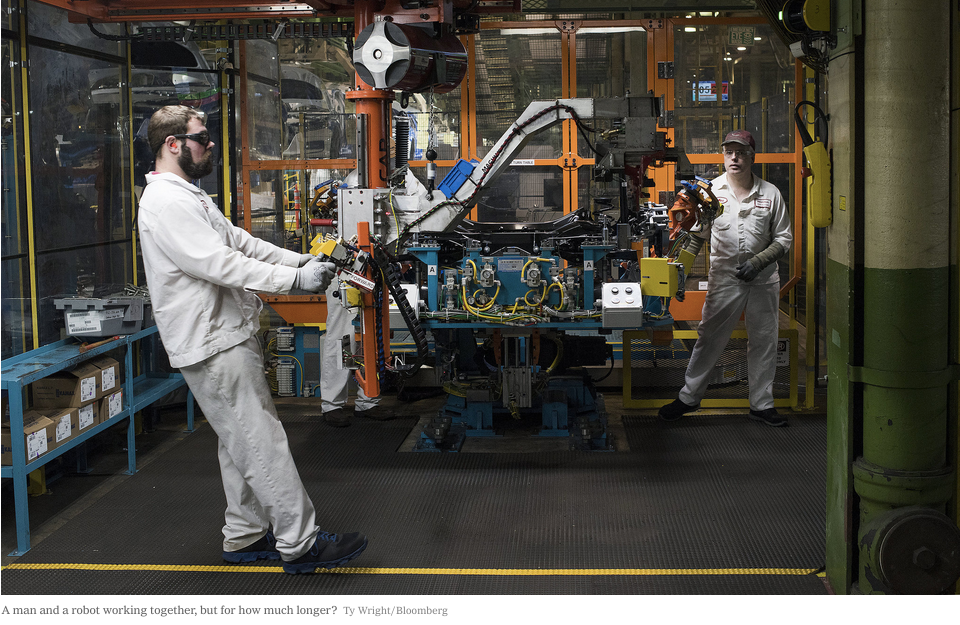The growing use of work robots and the deployment of artificial intelligence have been most disruptive in just those areas of the country that provided President Trump with crucial margins of support in 2016.
In a paper that was published earlier this year, “Robots and Jobs: Evidence from U.S. Labor Markets,” Daron Acemoglu and Pascual Restrepo, economists at M.I.T. and Boston University, demonstrate that the Midwest and sections of the South have far higher ratios of robots to population than other regions of the United States.
They calculate the job losses resulting from the addition of one robot in a “commuting zone.” Their bottom line: “one more robot in a commuting zone reduces employment by about six workers.”
These job losses are concentrated in blue collar occupations such as machinists, assemblers, material handlers and welders. Workers in these occupations engage in tasks that are being automated by industrial robots, so it is natural for them to experience the bulk of the displacement effect created by this technology.
The adverse effects of automation fall disproportionately on the voters who cast most of their ballots for Trump in 2016: Wh




